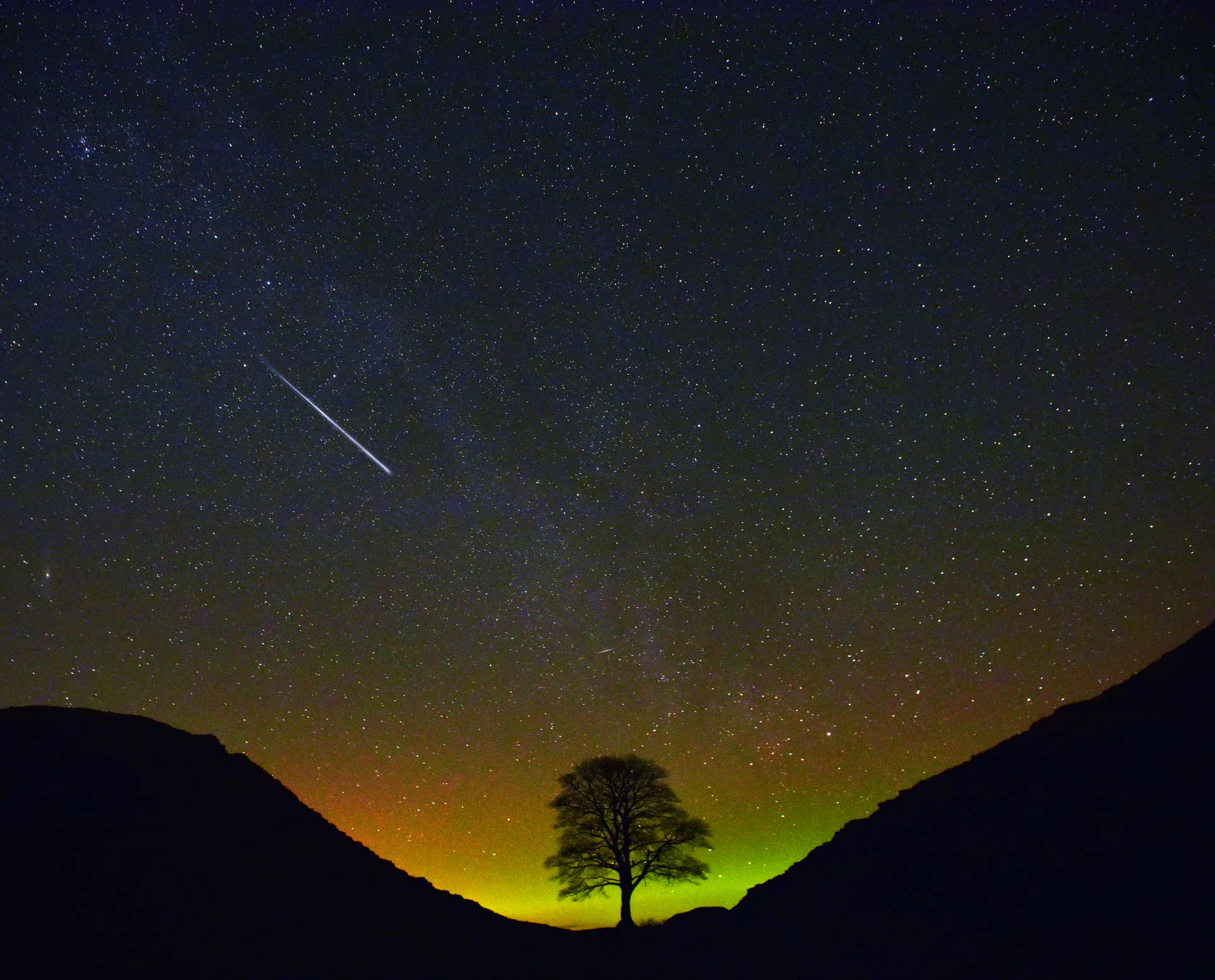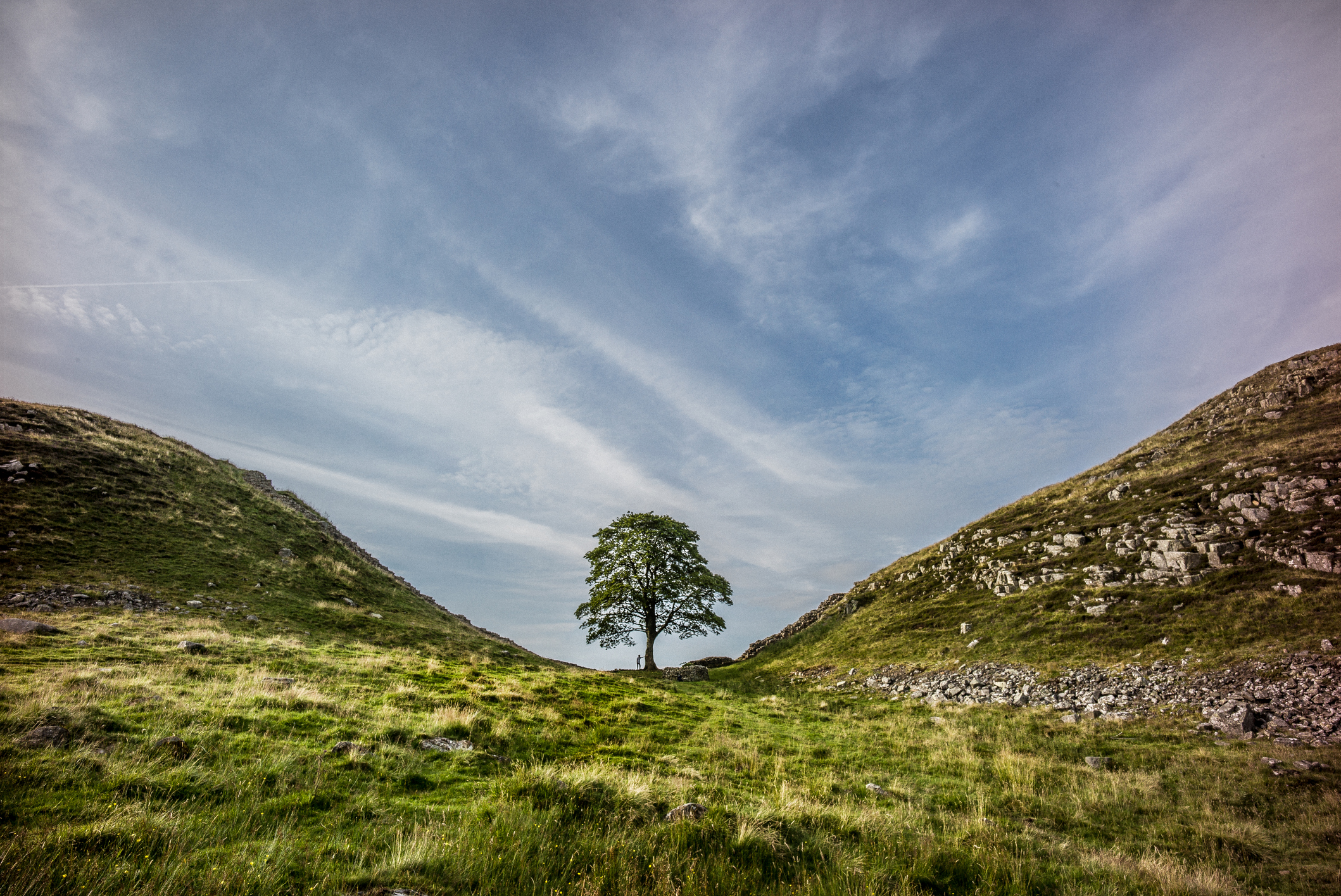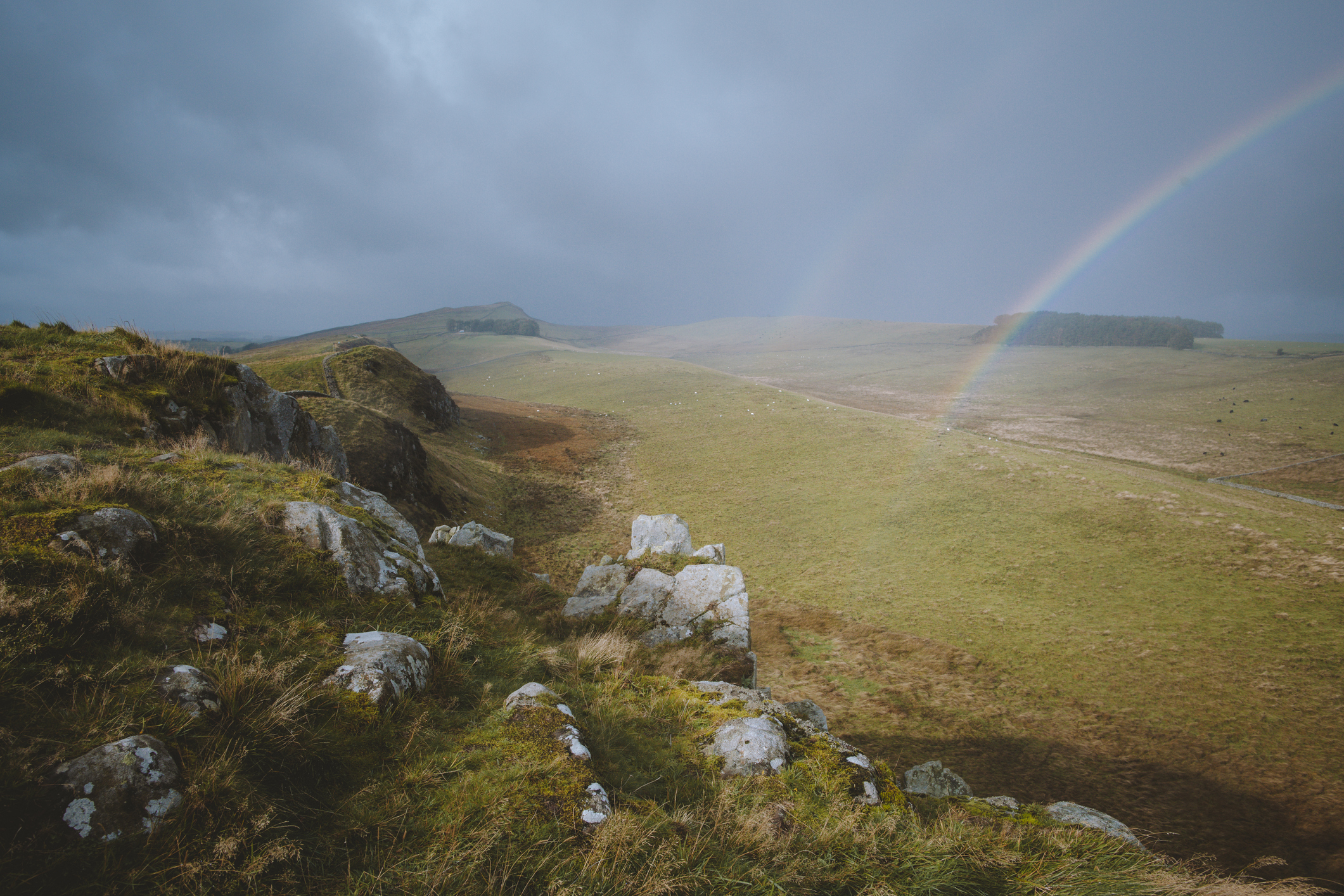Jason Goodwin: How to fill the Sycamore Gap
Our columnist on how some good might come out of the felling of the sycamore in the gap.

In Didling churchyard, under the north slope of the Sussex Downs, stands a huge and ancient yew, guardian of a tiny downland graveyard in which, among other treasures, lies an enigmatic gravestone that may mark the final resting place of a Templar knight.
At the base of the yew is a square-edged incision made in 1945 when a workman, misunderstanding his instructions to lop a branch, began to saw the tree down. He was spotted by a farm labourer, who told the farmer, who was in time to stop the tree being felled. Yews being what they are, mysterious and robust, living at a time scale different to our own, the tree has healed itself and flourishes to this day.
The felled sycamore on Hadrian’s Wall was not so lucky. It did not escape the chainsaw, which would probably have done for the Didling yew in its day. Why anyone should cut it down remains, and may forever remain, a mystery. Perhaps, as some gloomy commentators suggest, it tells us something about our cavalier attitude to Nature, although it might equally suggest the opposite. Or perhaps it needs to be seen in the context of the wholesale destruction of ancient woodland to build more ‘infrastructure’, woods in which every other tree is, or might be, more rare and valuable than the lonely sycamore.
Hilaire Belloc, in his 1904 book, The Old Road, wrote about ‘primal things which move us’. They are, he suggested: fire and voices in the night after silence; a roof; a tower on the skyline; and the road. That sycamore surely had the quality of a sentinel, which ‘far off arrests a man’s eye always: it is more than a break in the skyline; it is an enemy’s watch or the rallying of a defence to whose aid we are summoned’.
The tree stood guard, holding the gap, within the safe enclosure of a wall. With its felling, it turned out that thousands of people had loved that tree. They had visited it over the seasons, photographed it, filmed it, prayed at it, even proposed beneath it. ‘The tree was precious to me because I’d hoped we could revisit it as a family as our children got older,’ one Brendon Hayward told Sky News. ‘I chose the place to propose because the tree would grow with time and hopefully be there in 50 or 100 years. I’m gutted.’
I think Belloc missed another candidate for the primal thing. We are, by instinct, drawn to shrines. Beyond the thousands of official shrines put up over the centuries by religious builders, there are impromptu, unofficial shrines we see every day. For some people, even a shop window is, at bottom, a kind of shrine (baked beans for cherubs, perfume bottles for the sacred heart?).
Others are more instinctively spiritual: rags tied in a tree, stones piled up by passers-by to form a cairn in the wilderness or flowers left at the scene of a road accident or death. No doubt some of the impromptu shrines have, in the past, solidified into places of public pilgrimage: places of miracles, of intense feeling, of remembrance. You could call them holy places.
Exquisite houses, the beauty of Nature, and how to get the most from your life, straight to your inbox.
If any good is to come out of the felling of the sycamore in the gap, it might be that we remind ourselves to attend to our shrines, to identify these places, holy or numinous or whatever, and make them the object of our contemplation. They may be places in Nature, viewpoints, the crook of a stream, a stone, a tree — a place where ashes might be scattered, hopes defined, prayers and wishes invoked. That is the best way, I think, to fill the Sycamore Gap.

One of Britain's most famous trees has been cut down as vandals target Sycamore Gap at Hadrian's Wall

Hadrian's Wall in an English summer: Wind, rain, and unforgettable beauty
Solitary daily pacing of Hadrian’s Wall, in the footsteps of Roman soldiers, brings back family memories for Fiona Reynolds.

The extraordinary tale of Hadrian's Wall: 'Men have been deified for trifles compared with this admirable structure'
What once kept out hordes of bloodthirsty warriors is, nearly 2,000 years later, barely proof against the most timid of

Landscape Photographer of the Year 2022: The best pictures, as chosen by our picture editor
Country Life picture editor Lucy Ford chooses her very favourites from the astonishing images of nature in the 2022 Landscape